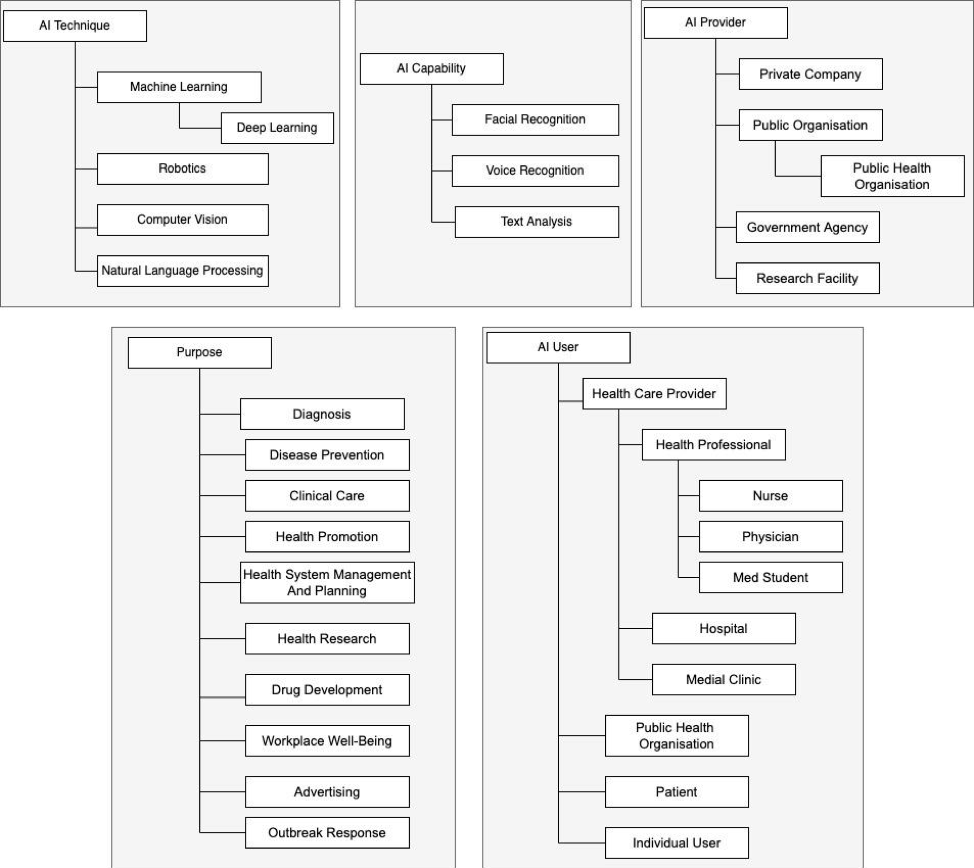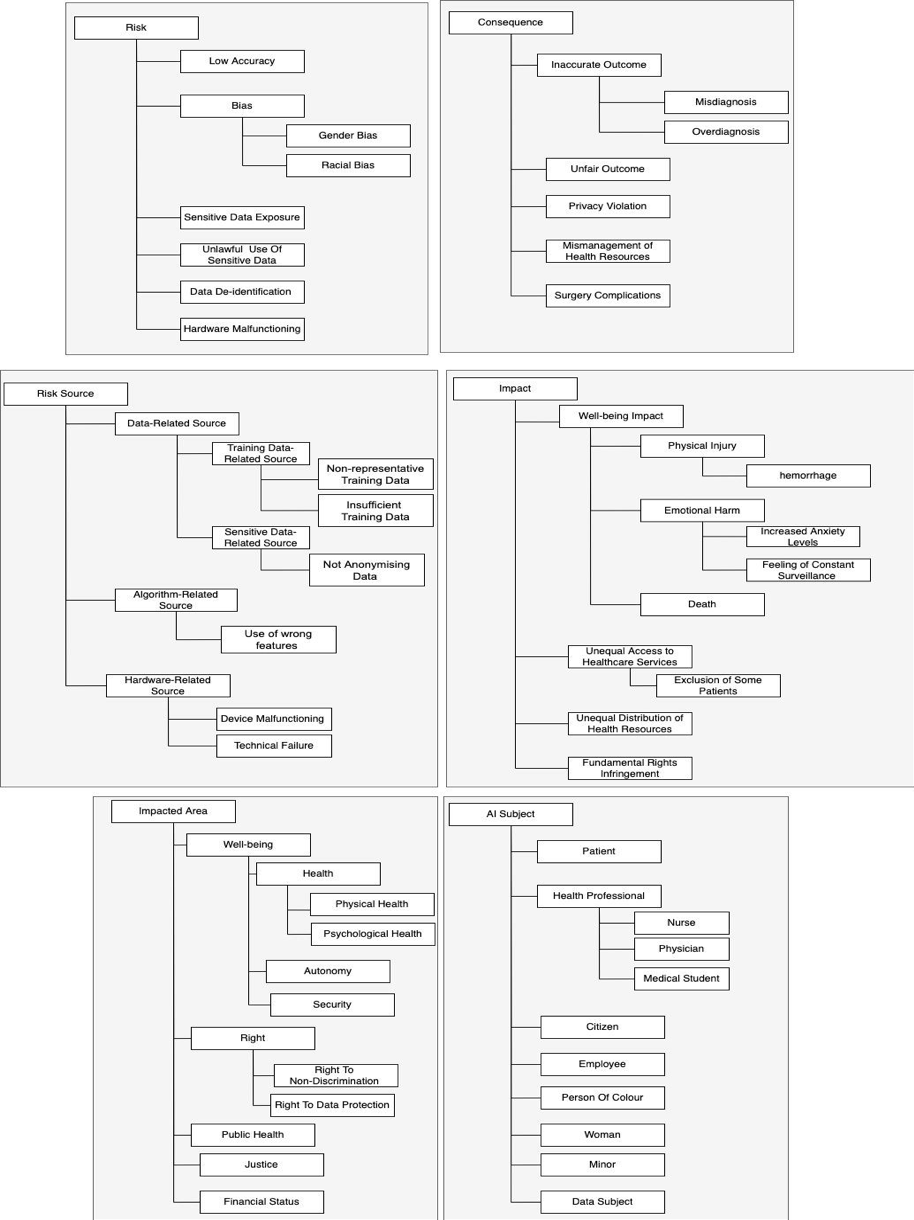Introduction
In this document we present a catalog of AI risks and harms in the health domain that mirrors the risks of a variety of different AI applications listed in the AIAAIC Repository. The majority of AI systems informing our catalog of risks is applied in the US context. It is thus important to keep the regulatory differences in mind when investigating the parallels between the AI systems being applied in the US vs. their application in the EU context. The catalog focuses on AI systems applied in both public health and healthcare contexts. We chose a wider scope for selecting the use cases informing the taxonomy since many AI applications may be developed for personal care contexts but are designed with the intention to promote public health by either making processes in healthcare more cost-efficient, allowing for better triaging in clinical settings or by providing the data for health research with high public health relevance. The AI applications we chose were developed for the following purposes: (Prediction-based) diagnosis, clinical care, health research, drug development, health promotion, disease prevention, outbreak response, and health system management and planning. We found several use cases with health relevance related to workplace well-being or advertising that we excluded, since we focus on the professional health context.
Our catalog can be used for ethical and legal risk assessments of AI systems as well as the basis for interdisciplinary work on the risks of AI. As will become evident from our discussion of the current state of debate in the ethical, legal, and social science literature, it is often not clear how the addressed risks are conceptualized. We thus aim for a clear understanding of risks that include a risk source, the actual risk, as well as the risk impact. By establishing this notion of risk, we hope to contribute to a better understanding of ethical and legal risk assessment that allows comparison between different methodologies, and facilitates communication in interdisciplinary groups conducting ethical and legal risk assessments of AI systems.
The following figure illustrate an overview of AI concepts within HART, namely AITechnique, AICapability, AIProvider, AIUser, and Purpose.

Concepts related to AI risks within HART, specifically Risk, RiskSource, Consequence, Impact, ImpactArea, and AISubject, are depicted in the following figure.

In the following sections we provide the competency questions which we believe our taxonomy could answer.